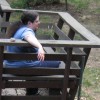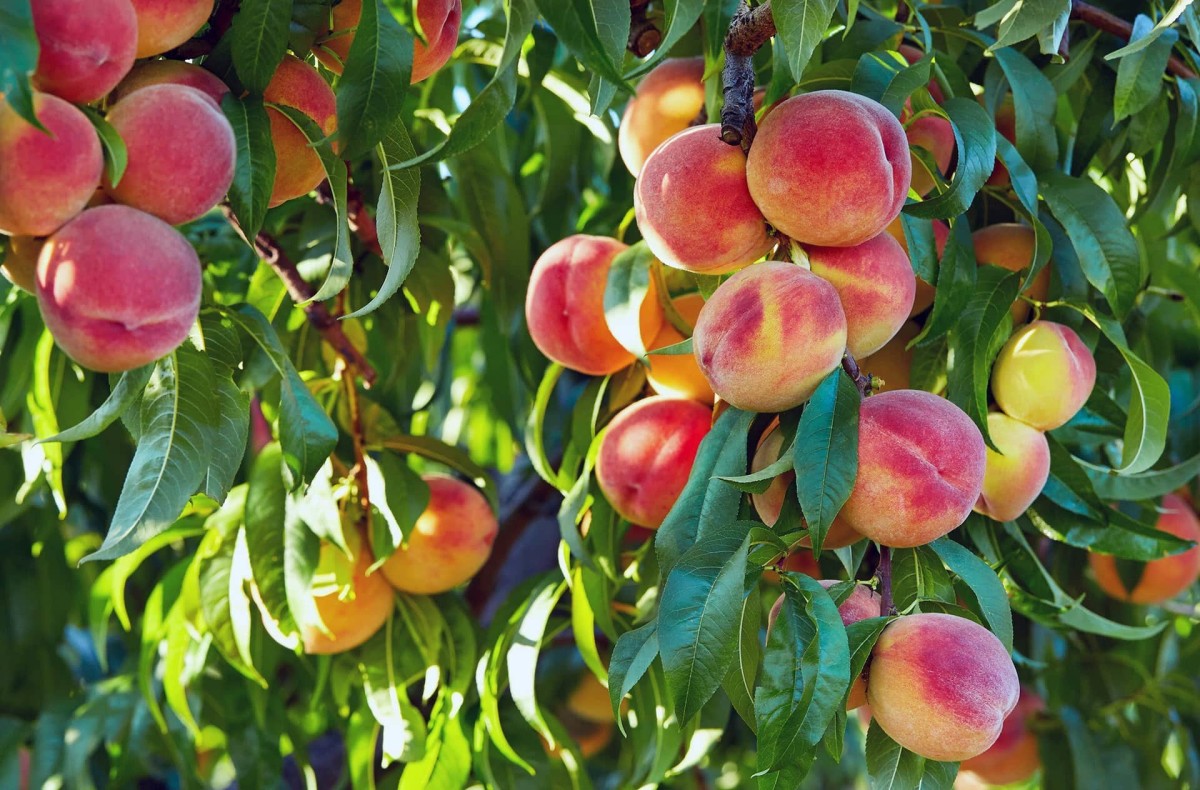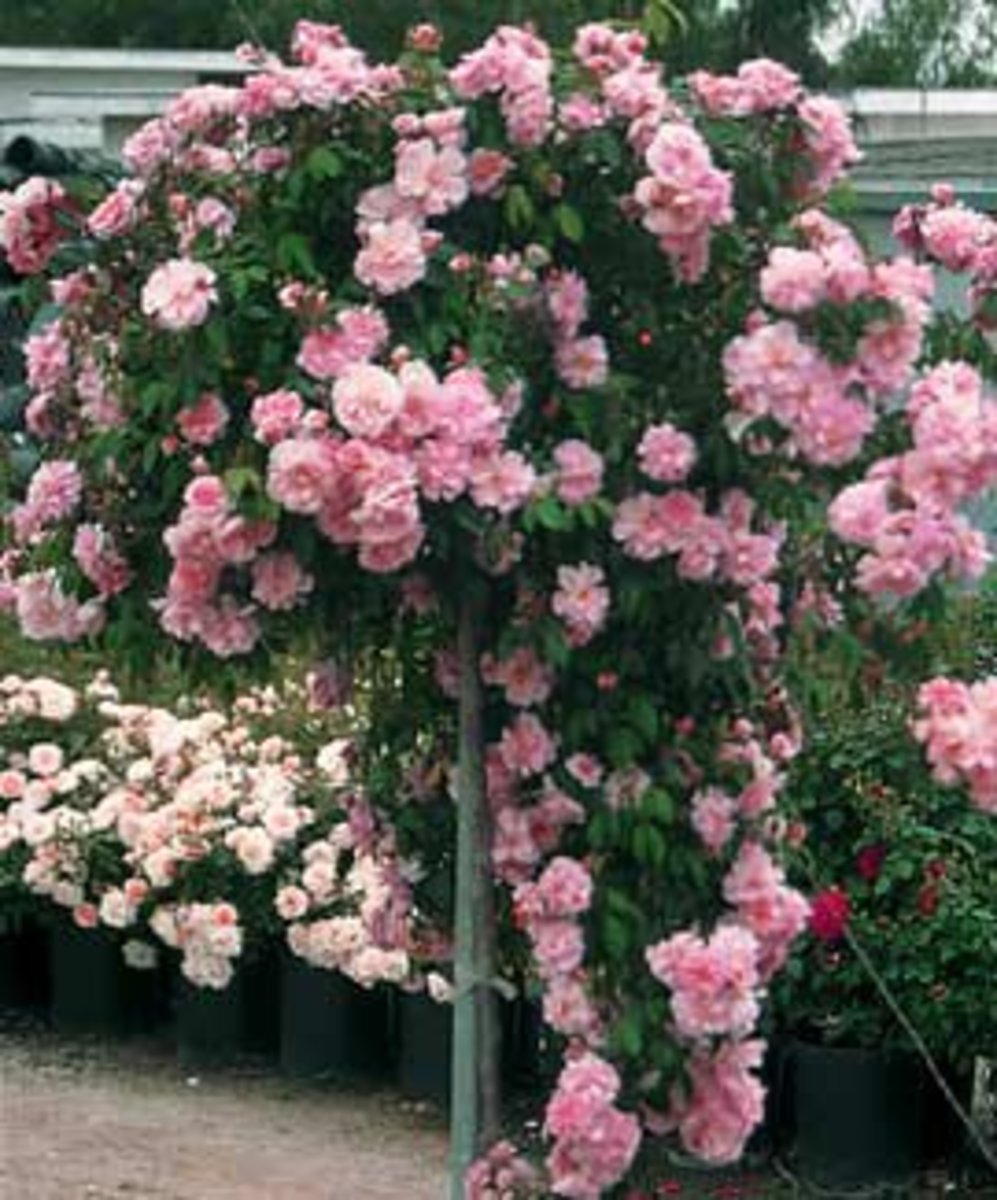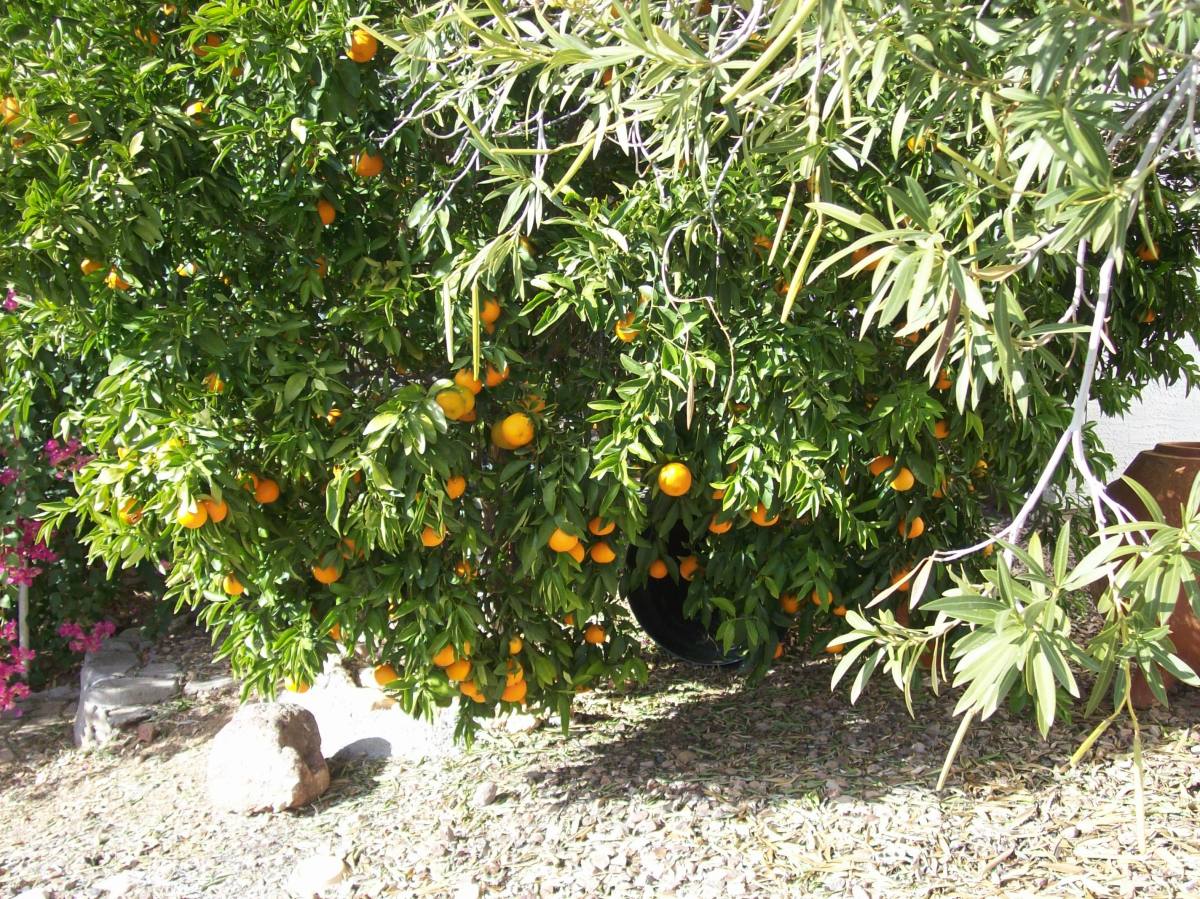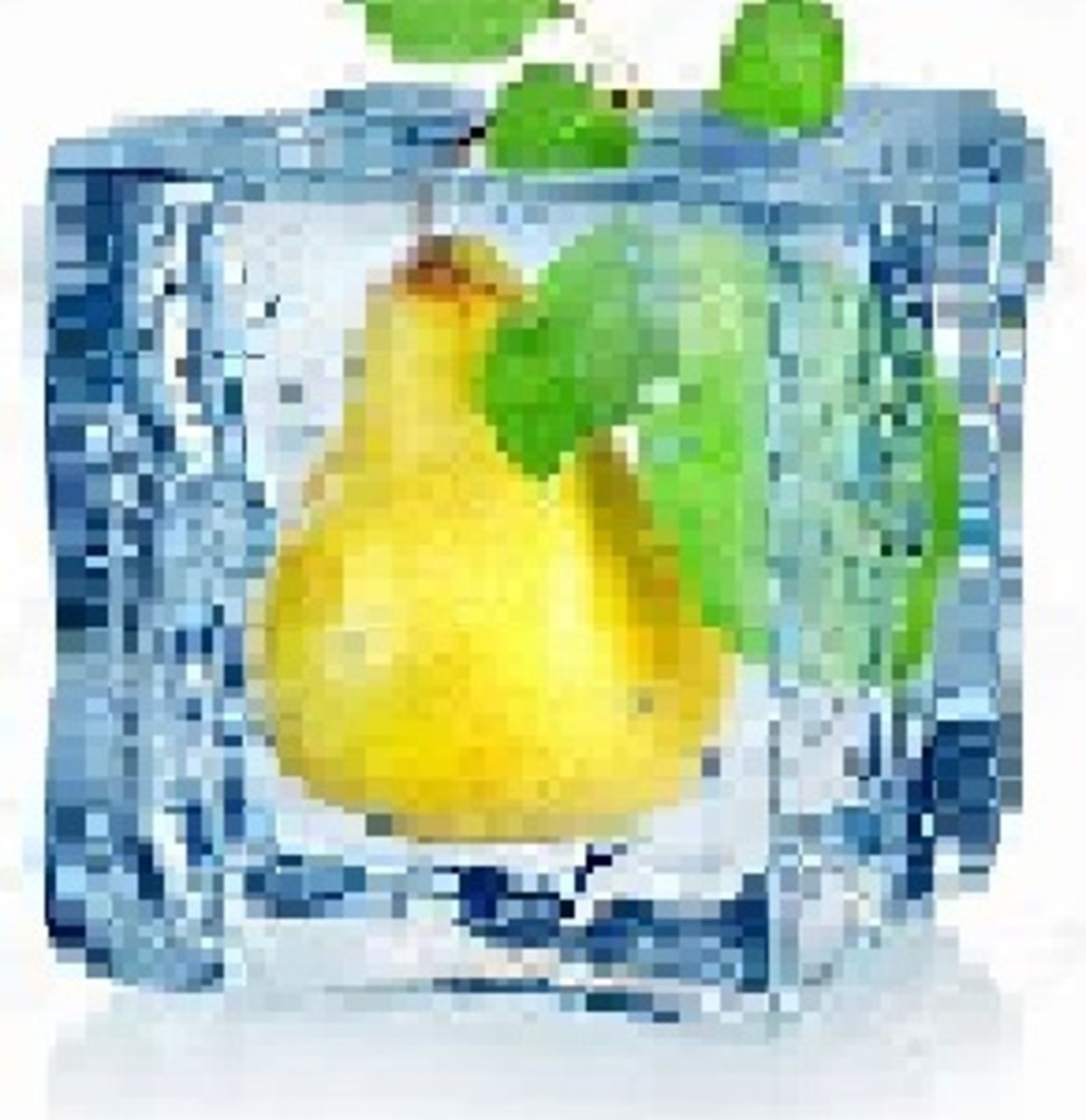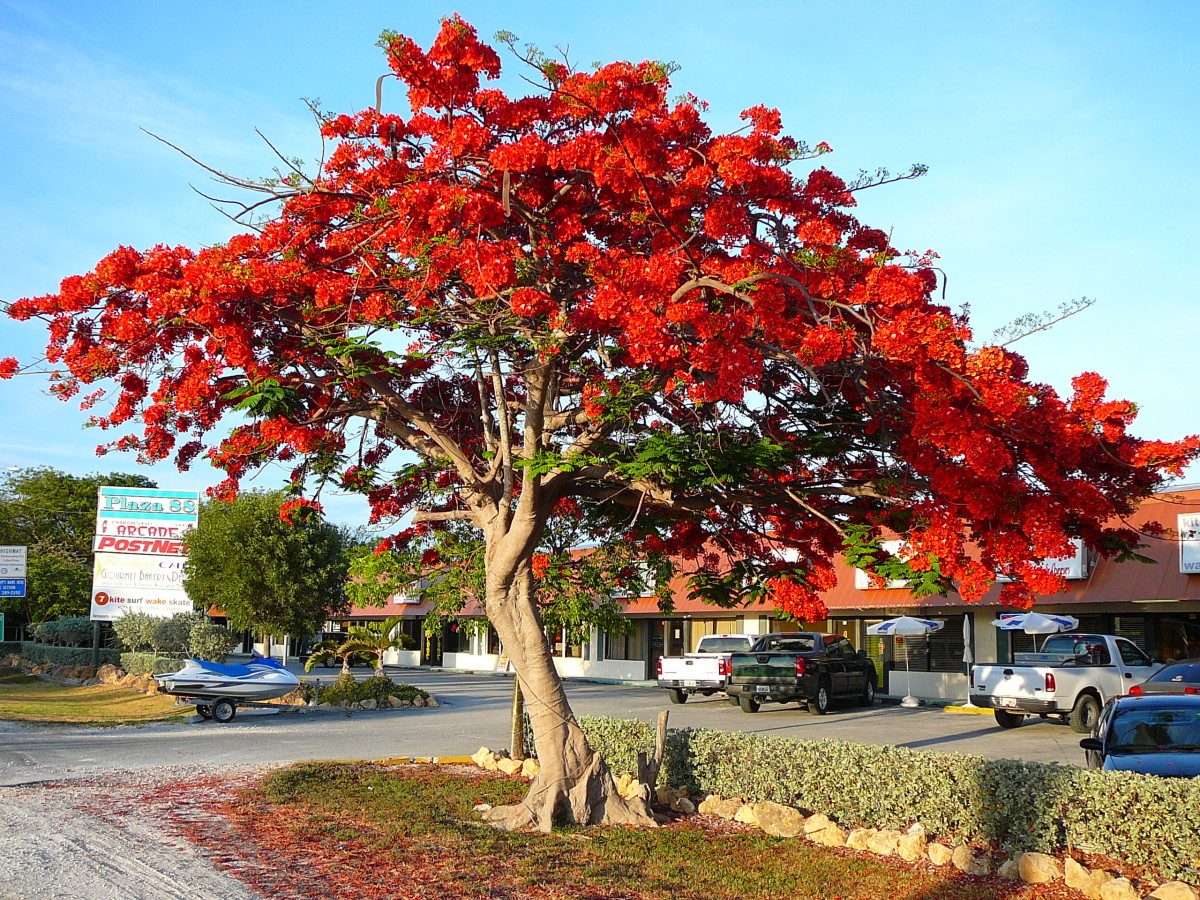Ornamental Cherry Trees: Weeping versus Standard
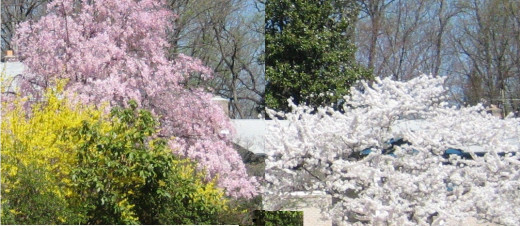
Tree Characteristics
Cherry trees are an ornamental favorite mainly for their showy blossom which appear for about three weeks in spring. The weeping cherry is a "genetically engineered" tree - bred for massive amounts of dark pink blossoms, "weeping" branches, and no fruit.
The traditional ornamental cherry is more "natural" - fewer, lighter colored blossoms, natural branching characteristics, and, of course, cherries. Now these are not Bing or Queen Anne-type cherry. Cherry trees planted for food are bred for massive amounts of big, sweet fruit. The ornamental cherry's fruit is more problem than food - small, hard berries with only a thin layer of tough skin and pulp around the stone (seed). Birds like them, but plant near sidewalks, the dropped fruit leaves dark red stains on cement and other paving materials.
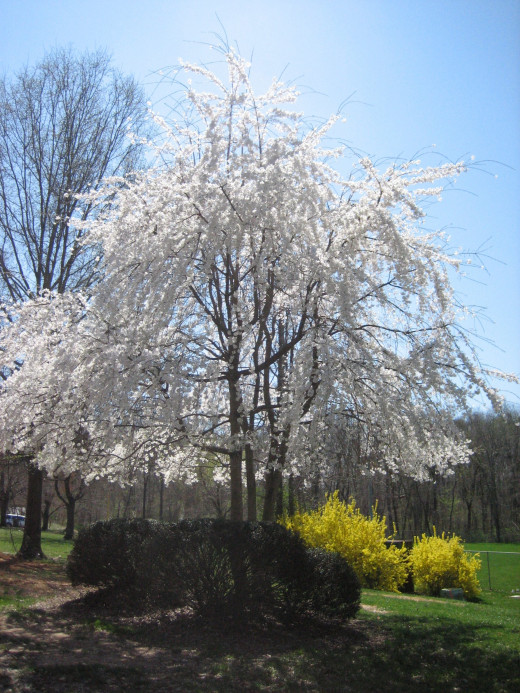
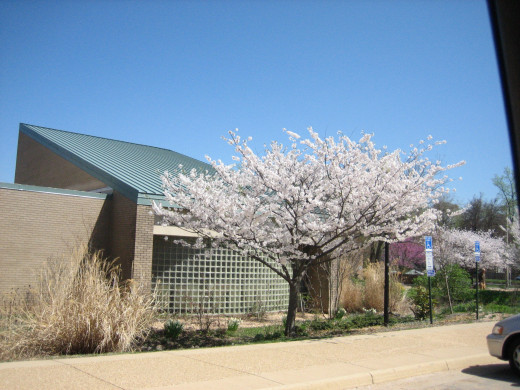
Maintenance
Besides the cherries issue, tree trimming is easier with the weeping cherry. The tree is self-shaping, with the new branches automatically "weeping" over the existing ones to maintain an umbrella shape as it grows. Trimming is done from ground level, cutting the thin branches to the desired length to maintain space under the tree. Without trimming, the branches will grow until they drag on the ground, "encasing" the tree in branches.
The standard ornamental cherry grows naturally, new branches reaching for the sky in a haphazard fashion. While there is never an issue of the tree being encased in it's own branches, trimming is required to maintain a manicured look versus a straggly one - and a ladder is required.
The upper photo is in the local park, a weeping cherry trimmed to keep the branches a uniform height above the bushed around the trunk.
The lower photo is the local library, a standard ornamental cherry, nicely trimmed to an inverted umbrella shape.
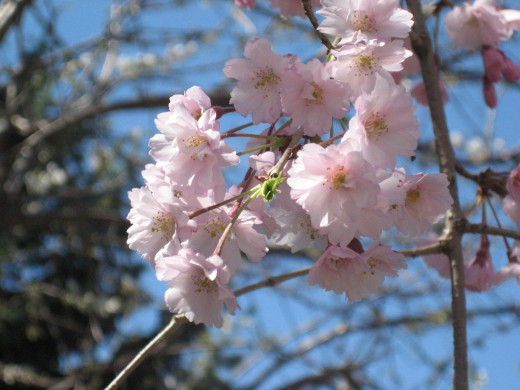
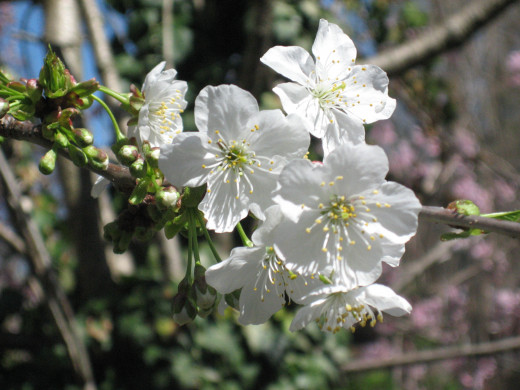
How Weeping Cherries are Made
Without seeds, weeping cherries are always nursery-grown. The trees, usually starting from cuttings, grow several years at the nursery. The same flimsy branches that make it desirable for landscaping, makes grow the trees difficult.
Because the trunks have the same flimsy characteristicts as the branches, they are not able to support the canopy. The trees are completely supported until they reach "saleable" maturity. Since having the trees weep all the way to just laying on the ground, or having to support the trees would make they undesirable for landscaping, the final process before sale is to give the tree a new trunk.
A standard ornamental cherry of appropriate maturity is topped (the canopy cut off) just below the lowest branch or branch bud. Likewise the weeping cherry is topped. Then the weeping cherry canopy is grafted to the ornamental cherry's trunk. Best of both worlds - a strong trunk and weeping branches.
Because the two types of trees are genetically very similar, the trunk is happy to support it's adopted canopy and vice verso.

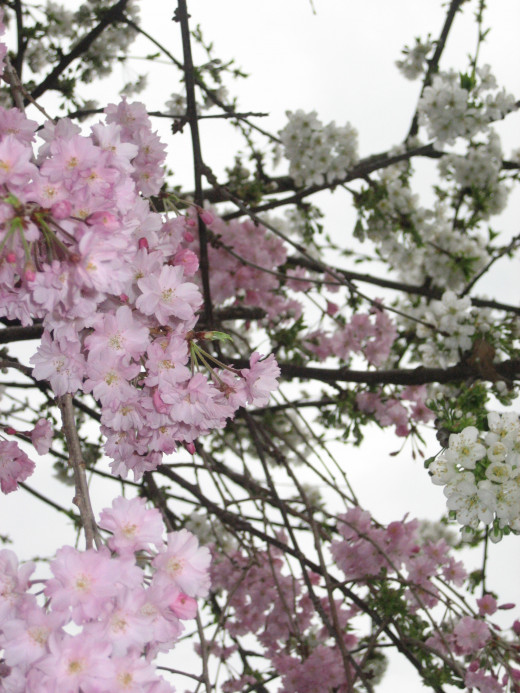
Graft Failure - AKA: The FrankenTree
The grafting process doesn't always go as planned. This tree is a "half and half". To the left of the graft, the original cherry put out a branch of it's own, and continued to support both canopies as the tree grew, giving the tree a slightly lopsided look.
The failure is likely the result of not cutting the ornamental cherry low enough, leaving a branch bud right at the graft; not completely covering the trunk with the new canopy (or slippage); or the new canopy was not sufficient to feed the trunk's root system (too small, too immature, or weakened) so the trunk "pushed out" foliage from the trunk (something trees do when they are in distress) and the push-out formed a full-fledged branch.
The tree now has the worst as well as the best of both. The weeping branches are naturally form the umbrella shape - but only a half-umbrella, and can be pruned from the ground. The rogue branch grows wild and has to be trimmed by ladder. It also drops cherries on the sidewalk in season.
Regardless of trimming efforts, the result is never a cohesive look - always an odd mix of manicured and straggly, or umbrella and inverted umbrella. The issue might have been avoided when the tree was young by cutting off the rogue branch while it was only a thin branch; though if the tree pushed out this branch to try to survive, cutting it off may have killed the tree altogether.
Since this wasn't done, it remains the oddest cherry tree on the block.
